#the 1990s and 2000s were weird
Explore tagged Tumblr posts
Text




youtube
#the Simpsons the early years#remember when fox first started#that was absolutely wild#copaganda#the 1990s and 2000s were weird#dark side of the 90s#Youtube
22 notes
·
View notes
Text
The box would scream.
remember when you were 10 and you would hang out with your friends in order to Look At The Computer together like you went to their house and experienced the information superhighway together. and then leave
356K notes
·
View notes
Text
Folks talking about the weirdness of late 1990s/early 2000s forum culture usually focus on the macro-level stuff – the inter-forum beefs, the raids, etc. – but on a personal level they were often even more unhinged. Like, many popular forums had recurring issues with people putting on the persona of a Sickly Artist (often claiming to have a heart condition, though just as often the nature of their ailment would be left unspecified), building a following based on the idea that they were this gentle, tortured artistic genius who could kick the bucket any time, and eventually "dying", only to return a few weeks later in a different Sickly Artist persona and start the whole thing over again. Many of the worst offenders went through this cycle multiple times. Sometimes they weren't even real artists, and were simply misrepresenting someone else's art as their own, which was much easier to get away with because Google Image Search wasn't yet a thing.
3K notes
·
View notes
Text
An Analysis of the Ubiquity of Mall Brands in the late 1990s to early 2000s, or
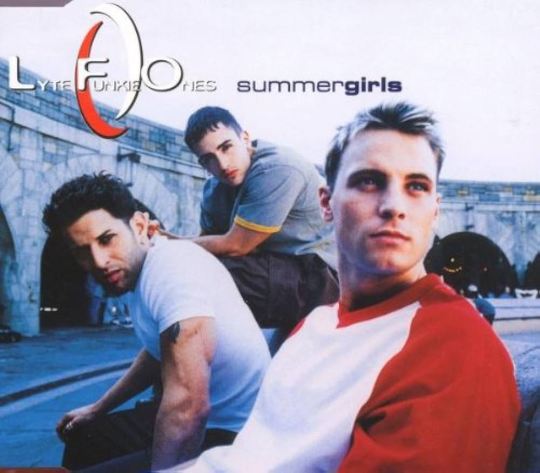
I Fucking Hate These Guys
by OMG!thatdress
If you were a tween to teenager from roughly 1997 to 2004, chances are, you were left with profound life-long trauma caused by someone wearing Tommy Hilfiger, Abercrombie & Fitch, Ralph Lauren, Nautica, American Eagle, The Gap, Old Navy, or, if you were came along a little later, Hollister or Aeropoastale.
I cannot overstate to my young followers how over-saturated these brand names were in teen culture at the turn of the millennium, the extend to which EVERYONE was wearing them, and yet, in a weird way, how light the imprint they actually left on fashion history was.
Watching iconic teen shows of the era, you don't see any of them because a.) TV teenagers tend to be way cooler and more stylish than awkward and desperate real teenagers actually are, and b.) these brands were all copyright protected, which kept their names and logos off the airwaves.
Look in a middle school yearbook, however, you'll see it. Look at your aunt and uncle's high school photo albums, you'll see it. Ask any late Gen X or early Millennial. It was real and it was fucking awful.
The big question is why? Why? WHY, GOD WHY?! There's a lot of answers to that question.
First of all, I'm going to cite this absolutely wonderful article from Collector's Weekly about why everyone's grandma had a hideous orange couch in the 70s, and give the most simple and straightforward answer: it's what was available.
This is when the concept of online shopping is still very much in its infancy, and the hub of American consumer culture was still your local mall. If you needed new clothes, you went to the mall. And guess what stores were at every local mall? You guessed it.
For the second answer, I'm going to dig up this utter relic from the early days of internet meme-ing, that has nonetheless stuck with me and had a profound impact of my understanding of how popular fashion works:
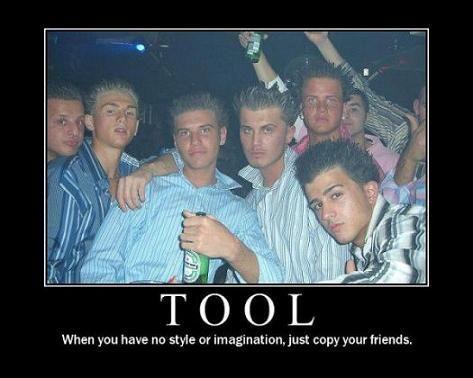
I'm pretty sure that the reason Abercrombie & Fitch manages to survive as a brand today rests solely increasingly middle-aged Millennial men whose sense of style has refused to evolve past the shit their mom bought them in high school.
And why the hell would they? Nobody wore Abercrombie because it made them stand out or feel special. I'm still pretty convinced that nobody actually *liked* the aesthetic or thought the clothes actually looked good. You need not look past the basic color palette to understand these were not brands meant for uniqueness or self-expression.
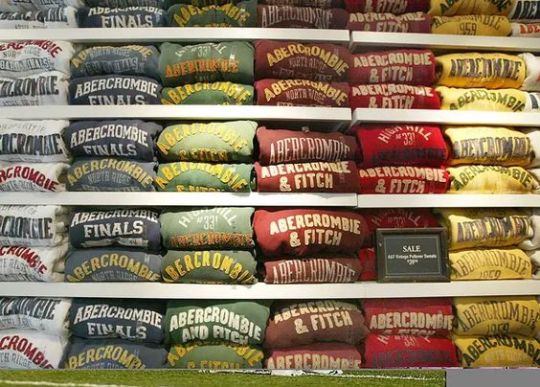
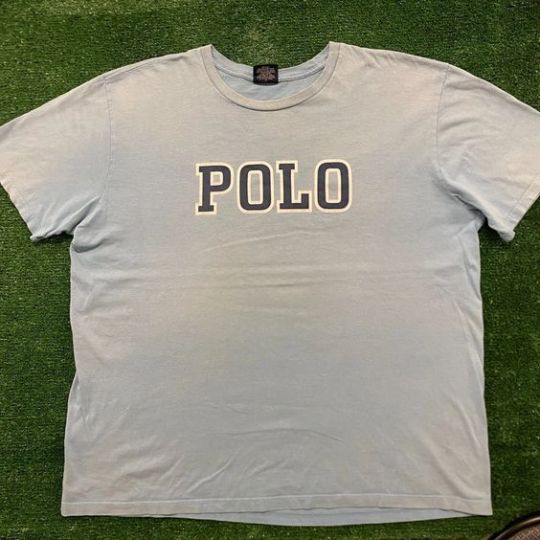
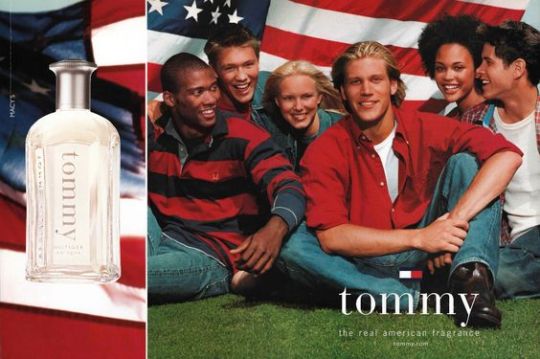
While Britney Spears pranced around stage in her iconic neon colors and body glitter, American teenagers existed in a never-ending hellscape of washed-out neutrals, faded denim, and American flag primary colors.
All of which served its exact purpose: it was safety. It was a way to appear cool if you didn't want to go through the ordeal of actually having a personality or a sense of style. Which, of course, goes back to point number one: it was just shit you bought at the mall because you needed clothes.
It wasn't enough to save you once the school bully caught that whiff of autism and/or queerness on you, but it was enough that you could blend into the herd and pray no one ever noticed you.
Underneath it all was a very subtle undercurrent of class and classism: to wear mall brands was to declare to the world that you could indeed afford to shop at the mall. It meant you weren't, god forbid, poor.
Status symbol clothing goes back to the invention of clothing itself. The concept of brands as status symbols is still very much alive and well, its just more limited to actual luxury brands nowadays. One need look no further than your favorite high-end children's clothing website to see that rich parents still very much think it important that you know their five-year-old is wiping its boogers on Versace.
None of these brands were actual high-end luxury brands, but they still advertised and presented themselves as such. Their ads featured signifiers of "all-american" (read: White) wealth: yachts, skiing, horses, beaches, shirtless dudes with chiseled abs playing verious sportsballs.
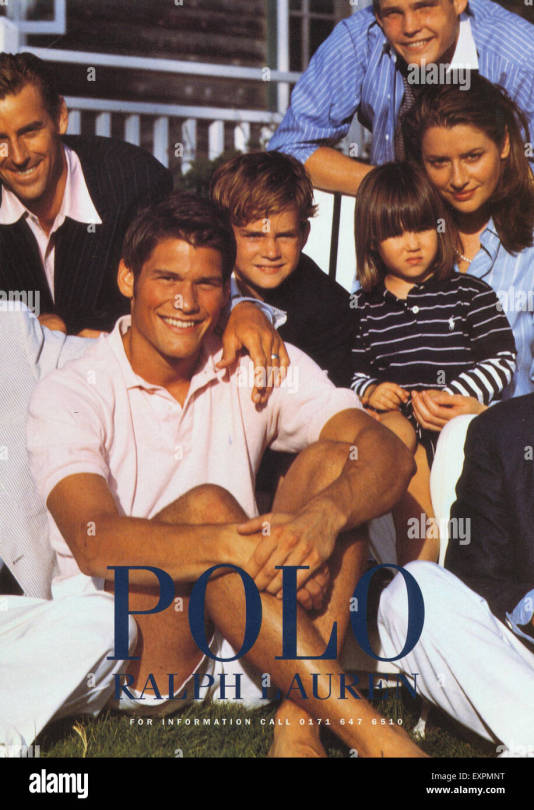
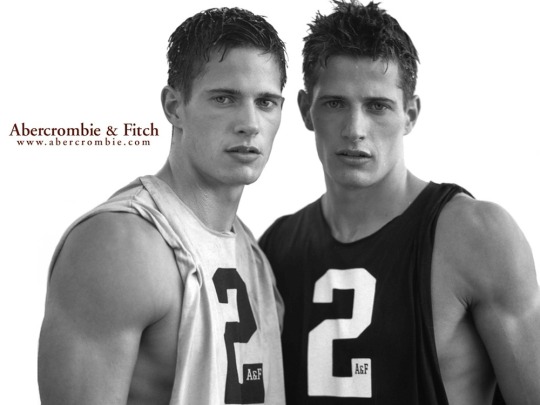
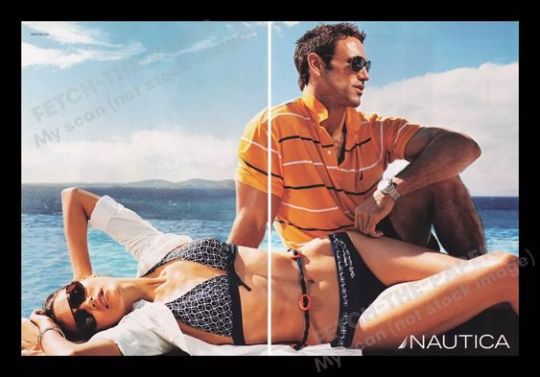
The color palettes and cuts mimicked the preppy "Ivy" style of the New England old-money elite, along with their hobbies and lifestyle. You may not actually own a horse, but you can wear a polo shirt. You may not be able to run without breaking your ankle, but you wear the same shirt as the dude holding a football in the ad.
It was an elitist, White and skinny image that didn't age well into the diversity and body-positivity of the 2010s.
In 2003, a lawsuit was filed against Abercrombie & Fitch alleging systematic racial discrimination. People of color were rarely hired, and if they were, they were given jobs in the back, away from customer view. In 2005, the U.S. district court approved a settlement of $50,000. A few years ago, Netflix released the documentary White Hot: The Rise and Fall of Abercrombie & Fitch which admittedly I haven't watched yet because my hatred runs too deep to remind myself of its existence.
youtube
It was a hatred of Abercrombie & the (white, thin, neurotypical, heterosexual) conformity that it represented that drove me screaming into the loving arms of Hot Topic and Linkin Park. Jordan Calhoun wrote an excellent article for the Atlantic about his experience growing up poor and Black and not fitting in to the Abercrombie aesthetic.
I would be very remiss if I didn't bring up the "urban" mall brands of the early 2000s: Fubu, Sean Jean, Ecko, Baby Phat, among others. They were favored by Black teenagers and White teenagers who wanted to be Black. I know there's a lot to be said about these brands, but I'm too Caucasian to really be able to talk about them with nuance. Maybe someone else will, and I will be very happy to listen.
As much as I hate Tommy Hilfiger, I really do have to give him credit for recognizing the incredibly lucrative "street wear" market and selling power of hip-hop. While most of these mall brands kept their image sparkling White, Tommy made Aaliyah his brand ambassador and regularly appeared in the wardrobes of popular rap and R&B artists of the time.
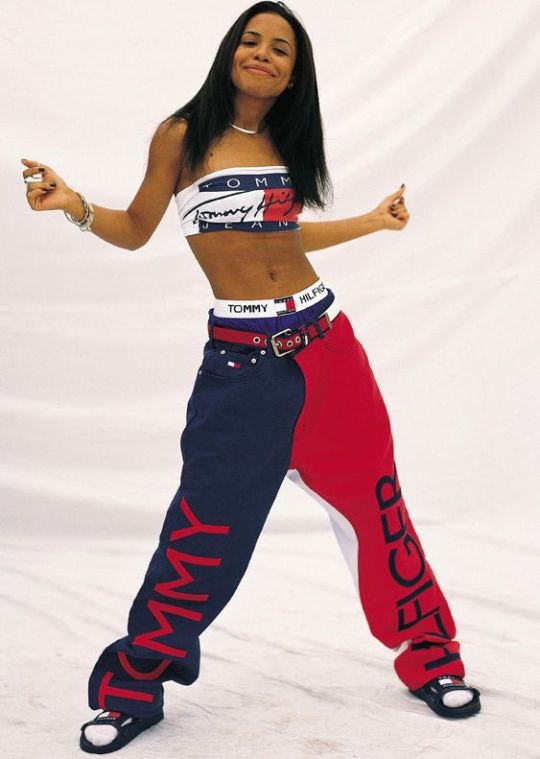
It'd be very easy and very reductive to say that the changing ideology of the 2010s was the downfall of preppy mall brands, but really, the thing that truly killed them was the downfall of the mall itself. Shopping habits changed, and logos and brand names no longer held the power they once had.
The moral of the story is that being a teenager is fucking hell, and these popular brands both offered the safety of conformity and a status symbol to hold over the heads of the poor and uncool. The irony is that everyone who hated them as teenagers (read: ME) and the freaks who grew up to truly love the power of self-expression through personal style (read: ME) became the truly cool people. If you wore Abercrombie you grew up to vote for Donald Trump.
GO GOTH. PREPS SUCK. THE END.
965 notes
·
View notes
Text
Let Free The Curse of Taekwondo: Things you didn't notice #1
Isn't this another K-BL where I'm internally squealing because of every single detail? You bet it is. You can read my other meta/cultural detail/Korean language posts for Love for Love's Sake, Time of Fever, Grey Shelter and Boys be Brave on my pinned post or hashtags^^ (I really need to organize it under one singly hashtag tho...)
I already talked about how impressed I am with the fact that this series has done their preparation job well, with props, settings, language, history etc.
It is about a countryside/small town in Southern province of Korea - because a lot of characters use satoori (southern dialect), almost all of them except for the main two guys. There is also a distinct contrast/conflict between 'fancy Seoul rich guys' looking down on 'Southern town'. Juyoung even was surprised Dohoi doesn't use satoori.

To which, he responded with 'You'll be uncomfortable if I use it". And Juyoung said there are plenty other uncomfortable things around here, beside understanding/listening to everyone using other accent xD Confusing Gaga translation errors, we meet again!

Actually, it's interesting because Dohoi's name is written 이도회 in Korean, which typically would be written as 'Dohoi' but pronounced as 'Dohwe' (think of surname Choi that is actually pronounced as Chwe), yet in the first episode I clearly heard them actually say 'Dohoi', letter by letter. Now I wonder if it's also related to satoori... I wish I could speak it, it sounds so cool tbh.

He actually said 'I'm not in a good condition', meaning his physical form. What do you mean, mood, when was that ever an excuse in sports..?xD
By the way, what is it with boys trying to get closer to other boys by buying them unusual ice cream?:') Okay, garlic sounds more weird than red bean one :D

Also, I tried to find the Hasong town they talked about but failed - maybe because of incorrect transcription or maybe they made up this town based on Uiseong - a small town close to Daegu which is famous for being the most famous garlic town, they produce a lot of it and garlic fame would be seen everywhere - so who knows, I bet they allude to this when Juyoung said 'why can't there be a vanilla garlic ice cream? It's like a collaboration!'
Another thing, I thought the time of this series was somewhere around 1990s-2000s (because I watched a movie in similar setting that was called 1997 year but they still used pagers, now that I think about it). It was also still the time where teachers could use physical punishment on their students, it's heavily highlighted but I don't actually know around what time they stopped... Probably in Seoul, they already were getting rid of it but in small towns it was old-school teaching, which is again why Dohoi tried to tell Joyoung out of it.
I'm not familiar when small laptops and phones appeared in Seoul but I think the series is actually somewhere around 2005-2010! Which would make sense, Juyoung got the 'cool' flip-phone and a laptop with Windows XP (released in 2001) but small town is still far from that, as they use landline house phones to make a call.
He also has mp3 player and as other tumblr folks figured out, he was listening and dancing to Jewelry song released in 2005 :)

And another thing that convinced me about the time era... the final scene!
Do you want to know why at the end of Ep 1 Dohoi smiled and laughed and ran to Juyoung even after so many exhausting days and neverending small miseries and a new loud housemate?
Because Juyoung not only came to pick him up with an umbrella in the acid rain, he also reenacted the famous umbrella scene from the classic romantic K-drama called "Temptation of Wolves" (늑대의 유혹) which was released in 2004! To make Dohoi laugh.

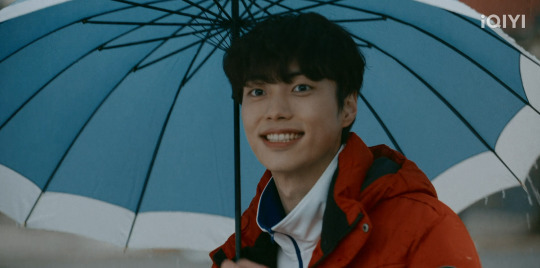
(Yes, when Juyoung intentionally put the umbrella down and the camera cut the shot to the framing when the umbrella slowly lifts up, showing smiling Juyoung, I was like 'you did nooooooot' xD)


(last screenshots taken from @heretherebedork post, I'm sorry I am very lazy and cannot take a good screenshot for life :'))
So that was already our very first romantic teasing-implication!
Another cute thing: optimistic Joyoung wrote a diary entry into the fake old Korean "Facebook" (they had Cyworld instead) to share his first selfie with Dohoi:

"[Excited Shin Jjuyoung]" (typing in a popular back then teenage style) "I miss you guys... But here it's nice too hehe ^___^ Come to play with me!! Together with my friend Dohoi too~~!"
Aren't they the cuteestttttt? I mean, this dynamic is not new but I love how unique the setting is. And I can't wait to watch the second episode, I'm waiting and savoring the first one for now but I'm going to make notes about other episodes as well so stay tuned! If you reply/comment in tags, I will put you in my tag list^^
Tag list: @benkaben @pickletrip @troubled-mind
#let free the curse of taekwondo#korean bl#kbl#dropthemeta#dropthemeta kbl#lfct#lfct comments#let free the curse of taekwondo comments#bl series#juyoung x dohoi#shin juyoung#lee dohoi
326 notes
·
View notes
Text
We had Tweety Bird, now the kids have Bluey.
I love Bluey.

slay I'm not even joking
24K notes
·
View notes
Text
arabic numerals ranked from worst to best by their potential as the lens in new year's glasses
#10: Seven (7)
seven is a very awkward number for a lot of things, and new year's glasses are no exception. its weird angular shape leaves no opening to put a lens in, and unlike the next entry, it's too wide to comfortably squeeze between lens in the second and fourth digits. and the impressive thing about 7 is that this is a number with plenty of writing variations, and yet i can't think of a single one that makes it an efficient lens! sorry 7. i think you're the best number for a rating scale, but that's about it.
#9: One (1)
the 2010s were a rough time for new year's glasses, huh? coming off the high of the 1990s and 2000s, people were determined to make the 2010s work, but that's a tall fucking order. the saving grace of 1, and the reason it's above 7, is that it's skinny enough that you can slide it between numbers and use the fourth digit of the year as the lens, but the fact you have to resort to that is only further evidence of how much 1 sucks at being the lens.
#8: Two (2)
two is definitely a tier above the previous two entries. it's an interesting and versatile enough shape that you can mess with it to try and make a viable spot for a lens, what with the upper loop and lower angle, but i feel no matter what you try, you always gotta make some concessions. like, you have enough to work with that a talented enough designer can make something that works, but usually the result is more "functional" than "good".
#7: Four (4)
now we're getting into numbers that could actually make for passable lenses. i mean, check it out! we have a closed loop here and everything, that has GOT to count for something! what makes me put four relatively low on the list is that with its right-triangle shape, i can't imagine it being a very comfortable shape for a lens, especially with how much ends up sticking out and downwards. still, a vast improvement over the previous three entries, even if it's basically just a worse 9.
#6: Five (5)
i feel like depending on what you prioritize in new year's glasses, these next two entries could end up going below the previous one, but personally, i think the not-closed round loop feels like a more practical spot for a lens than 4's closed-but-angular loop, y'know? so what if the loop isn't closed, it still mostly surrounds your eye, and feels generally passable to me. this is a number that wouldn't inspire the idea for new year's glasses, but certainly works now that the idea has been established.
#5: Three (3)
three is basically the same thing as 5, and i could even see some people putting it below 5, since 5's loop is a bit closer to being closed than either of 3's loops. that being said, 3's dual-loop is ultimately what gives it the edge to me. it ends up feeling more versatile to me. i feel the bottom loop is generally the correct choice, but just having the option of the top loop as well really helps it out. either way, after suffering through the 2010s and 2020s, i expect the 2030s to be a welcome breath of fresh air.
#4: Nine (9)
now we're getting to the really good ones. i mean, the 1990s are when the trend of new year's glasses started! if this number was good enough to kickstart the trend, then clearly it's a good number to put the lens in. having a closed round loop really goes a long way, it turns out! what puts 9 below the next three entries is the tail. having that swoop down towards your face feels like it'd be a bit uncomfortable, and this issue doesn't crop up with the next three entries. still, 9 is a trailblazer and its place in the New Year's Glasses Metagame needs to be respected.
#3: Six (6)
if 9's only issue is the tail getting all up in your face, then what better way to solve that then just turning it upside-down? it might just be me, put having it brush up against your forehead feels much, much less intrusive than having it brush up against your face. and plus, it can give the impression of a raised eyebrow! bonus! the 2030s-2050s are going to be a refreshing breath of fresh air following the awful new year's glasses of the 2010s and 2020s, but the 2060s are going to be a true new year's glasses renaissance.
#2: Eight (8)
hey, so remember how i put 3 above 5 since i felt the double loop made it a bit more versatile? well now imagine that, but both loops are closed. 8 makes for such a good lens, it's a little surprising we didn't see new year's glasses in the 1980s (i'm guessing having two of the same number is more inspiring than two different numbers?) either way, eight isn't content to give you just one closed loop. it'll give you a second closed loop right above. (or below!) 8 is a versatile number with many options, and i hope i can live to see the day we see it in new year's glasses. a true stand out in its field.
#1: Zero (0)
still, even with all the good years ahead, it's hard to ignore the fact that the best years are sadly behind us, with the 2000s being the absolute pinnacle of new year's glasses design. i mean, come on. a single loop with no frills is basically what glasses designs default to already, so using the middle two zeroes as the lens for glasses? impeccable design. the 1990s were good enough to kickstart the trend, but the 2000s were good enough to make us want to brute force the 2010s and 2020s. if that's not the mark of a good design, i don't know what is.
sadly, it's likely we'll never see design this good again. the next year with the middle two digits being two zeroes is 3000, and while we might be able to execute double-zero designs at the turn of each century, they'll end up looking weirdly lopsided in the process. i believe humans are hubristic enough to try and brute-force bad decades, but multiple bad centuries? forget about it.
oh well. happy new year

691 notes
·
View notes
Text
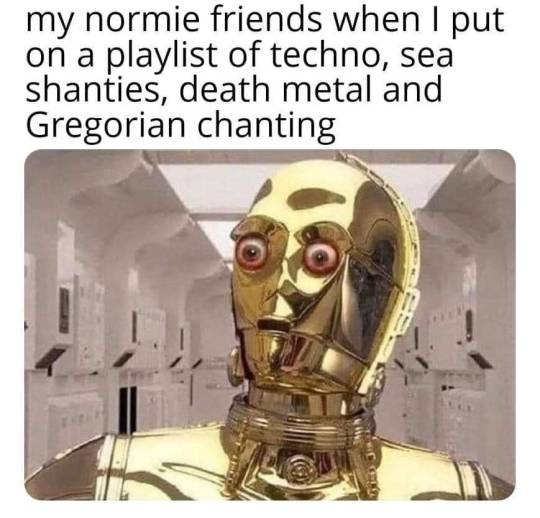
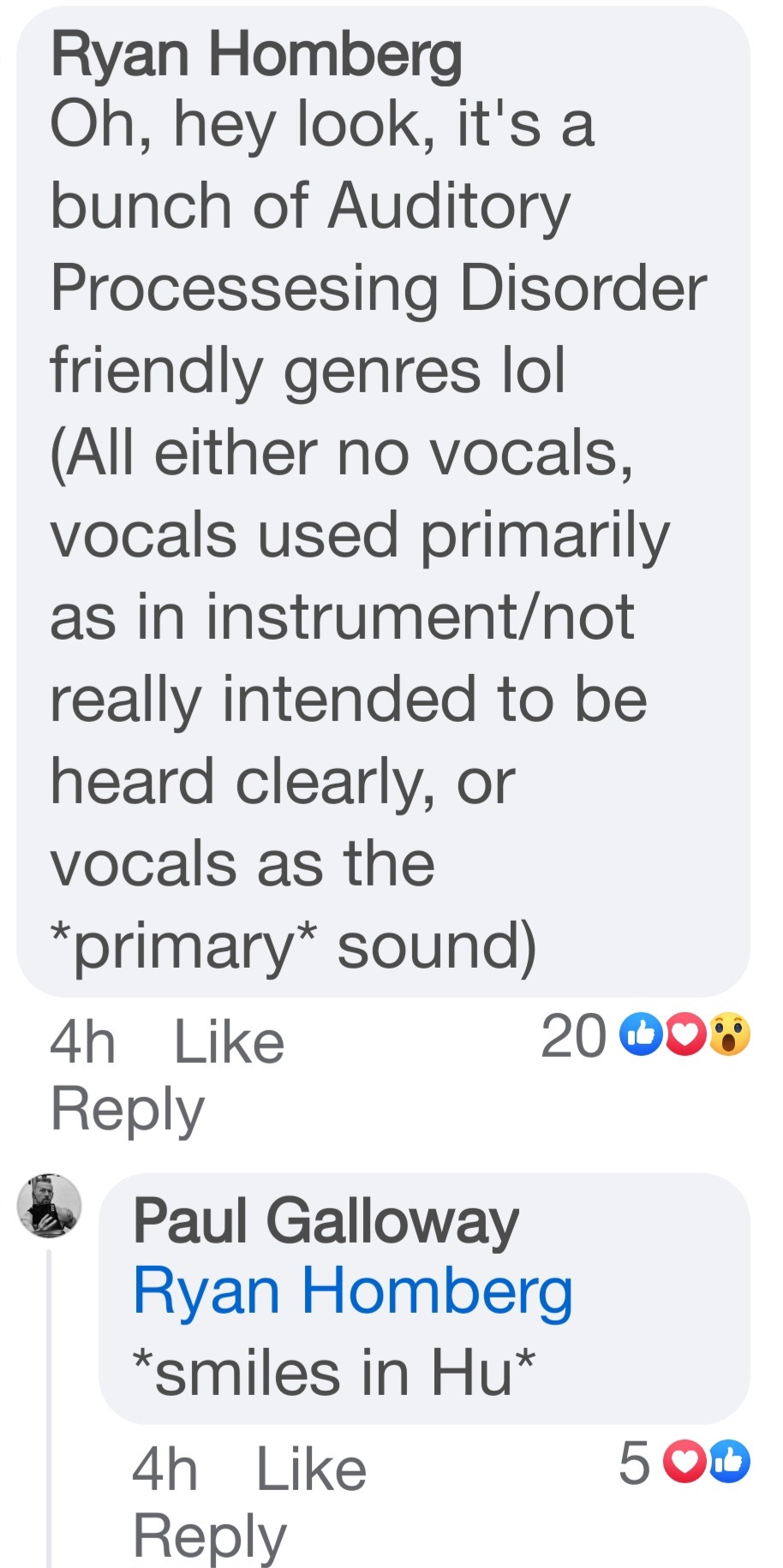
#the return to innocence#enigma#deep forest#enya#loreena mckennitt#pure moods#the 1990s and 2000s were weird
56 notes
·
View notes
Note
I might be asking the wrong person here, but why is the Acela so expensive? I need to travel from Boston to DC for a week for work so I compared costs and convenience of driving, flying, and taking the Acela and was surprised to find that the Acela costs more than flying (I was able to find round trip flights BOS-DCA for about $170, the Acela starts at about $140 each way) despite being significantly slower. Why does it cost so much?
I will concede that the Northeast Regional is cheaper than flying (about $60 each way), but it's also even slower than the Acela.
The Acela has several problems compared to analogous systems in other countries, and as a business problems mean costs and costs means prices.
Making a direct comparison to air travel also requires talking a little bit about the economics of air travel, since there are surprising number of weird things about that business compared to rail.
Part 1. Amtrak doesn’t own most of its own tracks. While it does own most of the North East Corridor, it leases track rights for the boston-providence leg from ME MOTHERFUCKER I’M THE PROBLEM and also the states of NY and CT own a section between NYC and New Haven. Now, when you are trying to have trains at up to 160mph, you need maintenance to be done within extremely tight tolerances, you need signaling to be extremely precise and consistent, and small mistakes can be deadly. Signaling and Maintenance on rented tracks are not literally impossible but they are a huge pain in the ass. These sections are slower and make the whole network much more expensive.
Part Two! Electification: this is one of the oldest rail corridors in the world and that means there’s a lot of old DNA in the network that it would not have if there was a full rebuild. One of these design “features” is that when the line was built, electricity wasn’t standardized and different plants would churn out different voltages and AC frequencies.
Between NYC and Washington there is a catenary system that operates at 11kv, 25hz that was built in 1905. This is insane. The modern grid runs at 60hz, and transforming power from a modern plant into 11kv, 25hz is a huge project in and of itself. But of course, the Boston to Providence section, electrified in 1990, has only the most cutting edge technology. It’s electrified with 60hz, 12.5kv, 10 years ahead of its time which was 35 years ago. And, when the Acela was first planned and operated in 2000, it was planned and operated with the now modern standard of 60hz, 25kv. So there are three different electrification systems and, to not have to switch trains, each train needs to be able to run with all 3 of them.
This is deeply stupid and only something you would have to deal with if you were hacking together increasingly expensive short term repairs onto a system that would be cheaper in 20-50 years to completely overhaul but in the present would cost 10s of billions to meaningfully bring up to 20th century operating standards. It’s a good thing we did the smart thing in the 1970s when Amtrak nationalized the collapsing private passenger rail companies and Conrail nationalized the collapsing freight rail companies and we recognized that running these crucial services with public money could generate huge amounts of economic activity and benefit society even if they ran at a fiscal loss, and properly funded the systems to build reliable and interoperable infrastructure for the next generation. Hold on I have to take this phone call.
………….
Yep.
…………..
Yeah ok.
…………..
They did WHAT?
Part Three: Ronald reagan is not dead enough
So yeah the main reason that none of this shit got fixed in the last 50 years is that for 4 successive administrations between Reagan and Bush 2 electric boogaloo the government has been slobbing on that Neoliberal knob like its subsidized corn on a subsidized cob. Private operators immediately saw the potential for infinitely lucrative federal contracts when the US seized the assets of Erie Lackawanna and Penn Central during their bankruptcy and formed Conrail. This was mainly Norfolk southern and CSX, former competitors who pushed hard for the reagan, bush, and clinton organizations to refurbish the lines at taxpayer expense before selling them to absolute corporate bottomfeeders so they could snap up lines that had been the main sources of revenue for these defunct companies at kleptocratic rates. But we’re not done. Freight companies hate two things more than even paying taxes, and these are OSHA and Passenger rail.
You see, it’s actually very hard to run freight and passenger on the same tracks. Freight is slow with long trains, long sidings, and loose schedules. Freight is optimized to get there, you know, sometime as cheap as possible. However, if you have passenger rail, those people have places to be. They need things like advanced signaling to move faster than 15 miles an hour, sidings long enough to pass at speed, and even, gasp, rails that don’t have holes in them so they don’t derail on corners. It’s not hard for a freight train to move along a track that is 85% rust, they just go slow and if they derail you’re only looking at maybe 2 superfund sites. But passenger rail, there will be bumps and passengers will complain. Customers are so unreasonable.
So when the federal government acquired all the tracks that became conrail, what did they do? Cut sidings, cut double tracks down to single tracks, cut maintenance, sold land. None of these bothered their future freight owner-operators. But they did undermine American passenger rail, on purpose, for 50 years. As soon as the work was done, the tracks were unfit for anything other than 400 box trucks of nitroglycerin pulled by two locomotives with one operator. How do you run passenger rail on that? Well, you play by CSX and Norfolk Bastard’s rules. Fuck your schedule. Fuck it slow. Fuck it for so long that it hurts. And, when you’ve bled enough revenue, complain to the federal government that you can’t possibly keep going and need to be sold off to private equity for parts.
So yeah. Freight rail in the 70s, the ruthless march of neoliberal capitalism, a frankenstein’s monster of a network, and a complete lack of revenue from either public subsidy or ridership to fix either problem.
Oh and there’s the fact that every single Major airline operates their flights at a loss and use credit cards as their primary source of income. The scheme is you take out a credit card, they run like a normal credit card company, except whereas most banks give you cash back they give you “miles” or “points” the vast majority of which will never get spent. It’s almost a license to print money as long as you have enough people you can convince will someday be able to afford to go on vacation with that fancy credit card they paid for. Budget Airlines who don’t run this scheme are folding both in the sense that they are going under financially and also in the sense that you better hope that your spine lets you compress into the overhead compartment if you want to get to your destination.
66 notes
·
View notes
Note
Hey, I don't know if you've already answered this (and this may be a weird question lol) but why did Hydra just let Bucky's hair grow long? Why didn't they just cut it? I've seen you do other metas and stuff like that (which I love, you're a great writer!) So do you have any ideas?
Aww thanks for enjoying the other metas 💕
That is a very interesting question that I’ve never thought much of 😅
From a Doylist perspective, the Winter Soldier arc was published in 2005-6. Ed Brubaker was born 1966. Men having long hair became more acceptable and even fashionable from about the 1970s (ie Brubaker’s formative years), and that style carried over to the late 1990s (or, if you’re like me who was in the JPop fandom, it was still popular for most of the 2000s). Longer hair in men was generally seen as subversive and cool, or untamed and unkempt, which were descriptors that would have fit Bucky’s reappearance in his new persona. It was also a good way of indicating that time has passed and his character has changed significantly. One other thing is, when it comes to 2D art, long hair flows, ie it’s easier to express dynamism, which is why so many superheroes wear capes. I believe (not having read the actual comics) Bucky’s role changed in The Winter Soldier run from a pure sidekick to something closer to an antagonist and partner, so the more distinctive character design reflects that too.
From a Watsonian perspective…I guess men’s short hair can be somewhat high maintenance in that you kind of have to trim it once a month at least. Who knows if the serum affects the speed of hair growth as well, because if it does then maybe he needs more frequent trims and it just gets long if they miss any. Presumably, given his history, he’s also not an easy customer to approach with a sharp implement, especially not that close to his face. And they’re always in such a hurry to pack him back in the cryo tube or to get him prepped for his mission that it just gets missed until it really gets in the way.
The other possibility is that the longer hair also changes his face shape substantially speaking as someone who didn’t recognise Bucky when the mask came off. It makes his face more angular and the shadows deeper. It probably stops his memories triggering as easily when he sees his own reflection. It serves to erase his original identity, along with his new “name” (although we have no evidence that he knew he was called the Winter Soldier while he was still brainwashed), new uniform and the bionic arm.
The third reason is that the long unkempt hair could be used as a psychological tactic. It’s emasculating and demeaning, especially for someone born in the 1910s and normally known to be well-groomed and tidy. It’s an element of control over his bodily autonomy that he cannot change without them allowing it or at least giving him access to implements to cut it. It contrasts him with the other soldiers, including the other “Winter Soldiers” we see in CACW, who are allowed to sport typical masculine haircuts, and serves as a continual reminder that he is “other”, if not considered somewhat subhuman.
So that’s my two boring cents. I wonder if anyone else has other ideas.
152 notes
·
View notes
Note
THERES MORE EXPERIMENTS THAN ANITA??? I NEED TO KNOW MORE ABOUT THEM PLSPLSPLSPLSPLSPLS 🙏🙏🙏
OK
I’ve had this idea for a while however I might tweak a few things so take this with a grain of salt
when David was creating the Blood Moon time, he went to Gunua under the pretense of trading with the island—however he spent his time there with the Gunua Court trying to get to Lady Eleanor. When he finally had to chance to speak with her, David offered to exchange Flores’ method of managing different worlds and creation of life through herbs—for a cup of honey from the bottle of eternal life, Eleanor would agree only to use it to monitor the Flowers Grove world
however to create the BM timeline, David was required to go outside the island—to bypass this, he requested a worshipper of the temple to go find these herbs/items in his name
in exchange he gifted the worshipper half the cup of honey—telling them to only use it when necessary HOWEVERRR this worshipper would try to use the honey to try and cheat life, so they ran away from the island. Maida’s previous teaching in Scaylum had a passed down tradition of healing—but never immortality as it would require the honey
so the worshipper went to Scaylum/aka the Plains and used the sacred tradition to keep them alive for hundreds of years. Over the years the Worshipper would also try to revive the dead using honey, famously it would work with Caina (#002) however it would take years for her to actually wake up—the experiment was a success and see would be the model for the rest of the revival experiments. but the Worshipper would have to deal with the consequences of these experiments—the side effects of these half human half plant patients (Caina, Leona) and quickly faded into obscurity
the experiments would be picked up by Anita’s mother (around 1910s) who was a medical student under Opuntia. They extracted the honey from the flowers grown from the experiments to revive Rosemary (#004) a daughter of a nobleman in Spain. Then Anita’s mother would keep Opuntia alive through the years with the honey—but the same side effects would occur similar to Caina, Leona, and Rosemary. In late 1960s, Anita’s mother and Opuntia would famously revive Dione and Jupiter Mellon, two American socialites whose families sought the treatment after the story of Rosemary became well known through the states. However their side effects would be different as Dione would become akin to an oracle, and basically gained visions of the future—however her husband Jupiter could transfix the weather and thunder if under high levels of stress
after the “positive” side effects Dione and Jupiter were given, Anita’s mother was convinced it was time to attempt to revive her daughter IT WORKS LMAO however Anita can’t adjust to the modern age (early 1990s, 2000s) and avoids journalist who ask for her story on beating death—unlike the rest of the experiments who were already obscure and were well off enough to numerous shows/interviews/publications, Anita was the only one who was “public” enough to be interviewed, which is why Juliana is deadset on interviewing her and trying to find out the revival process Opuntia and Anita’s mother took
uhh it’s short short summary the experiments were just rich families paying to revive their children/beloved family members, however Loretta is only classified as an experiment because she was created with the honey like the others, and it had super weird side effects to go with it—for example Blood Moon Lori was basically omnipotent


Also if you guys remember #009 (Sol) basically Elise will take over the next experiment by trying to maintain the anger of Sol, the (kinda) rebirth of the deity Sol. The design is super old and I’m gonna have to design #009 but that’s basically my lore for Anita’s story, it might change to make it less Rick and morty but its fun to write lol
33 notes
·
View notes
Note
I'm actually bummed about YouTube as a whole bc We're in Hell and Channel 5 both turned out to be rapists and just kept making videos so now when I need inoffensive background noise at work my eyes glaze over and I type in "bossa nova" like literal elevator music is better
tumblr is fucking with me and wont let me post the whole post without telling me why but i think bc of all the links i put its getting flagged as spam lol. bear with me as i update this post
oneshorteye: speed run history vids about sierra games and their ilk. interviews with the creators. https://www.youtube.com/@OneShortEye
anomaly documentaries: short form docs about weirdness in the world mostly prior to 2000. delivery and presentation like a 1990s educational video. not edutainment. https://www.youtube.com/@AnomalyDocs
atrocity guide: similar in tone to the above. not as dark as the name would suggest. https://www.youtube.com/@AtrocityGuide
anyaustin: seeks out mundane, odd, tranquil, haunting, or idiosyncratic areas in video games. sometimes roleplays as a census taker to determine the unemployment rate of video game citites https://www.youtube.com/@any_austin
drripVHS: a hero, a legend. uploads rips of VHS tapes he picks up from thrift stores in the portland oregon area. soooooooo many RLM wheel of the worst picks can be found here. https://www.youtube.com/@DrRIPVHS
taskmaster/bbc shows: a shocking amount of british tv shows are uploaded in full on youtube by official accounts. taskmaster fucking rips lol https://www.youtube.com/@Taskmaster
bobby fingers: irish artist who creates dioramas of famous people and events while collecting an oral history of the event and everything surrounding it. this is underselling his production quality by a lot. subjects include mel gibson's drunken arrest and steven segal getting bodied by gene lebell https://www.youtube.com/@bobbyfingers
danooct1: computer enthusiasts who runs old, weird viruses from the 1990s-2000s on his machines. its funny how many of them were little pranks. https://www.youtube.com/@danooct1
primm's hood cinema: funny guy reviews hood movies. simple as. https://www.youtube.com/@PrimmsHoodCinema
treytheexplainer: history nerd (history student?) explains really, really, really, really, REALLY old stuff. but funny stuff. https://www.youtube.com/@TREYtheExplainer
ann reardon and how to cook that: an aussie mom who creates frankly astoundingly beautiful confectionery creations. started to debunk dangerous 5 min craft vids after becoming alarmed at their proliference. also shows how to fix your busted ass cakes and explains why they fucked up. https://www.youtube.com/@HowToCookThat
MEpearl: i love georgette i would move heaven and earth for her and her opossums she rescues. shes insane (strongly positive) https://www.youtube.com/@MEpearl
tara a devlin: some aussie who translates and plays obscure horror games of varying quality from japan. VERY obscure and weird stuff. fun. https://www.youtube.com/@KowabanaJapan
189 notes
·
View notes
Text
Just did some math regarding Rogues! The Podcast and the results were interesting.
Jon officially turned 44 in 2024, placing his birth year 1980. This is where things get weird.
What's weirder is that "S04E00 | The Files of Dr. Hugo Strange 0932 - Jonathan U. Crane" takes is recorded September 7th, 1995, meaning Jon is 15 in that recording?
Jon killed his dad on October 31st, 1990, meaning he was 10 years old. I was under the impression he was older, like in his late teens.
"Oh well, maybe the series just takes place in the 90s-early 2000s."
You fool.
Edward acknowledges the year multiple times in the series. The earliest in season 1 has him wishing everyone a happy 2013.
Did an independent writer who voices the majority of the characters in an extremely well-written series make a minor mistake?? Am I stupid??
Yeah probably
ABSOLUTELY NOT
39 notes
·
View notes
Text
Pushing the limits of computer animation – The Adventures of Tintin: Secret of the Unicorn
Our previous articles discussed the trend of realism in computer animation, and how some computer-animated movies, namely Toy Story and Spider-Man: Into the Spider-Verse, chose to radically distinguish themselves from it and revolutionized computer animation twenty years apart. There was still however a certain type of aesthetic to be found in realistic 2010s computer-animated movies. Thus, while major animation studios were perfecting their techniques, directors of live-action movies took hold of these tools to try to translate their vision.
The 2011 animated movie The Adventures of Tintin: Secret of the Unicorn is a very interesting case to study in this respect. It is indeed one of the best examples of trying to close the gap between live-action and animation.
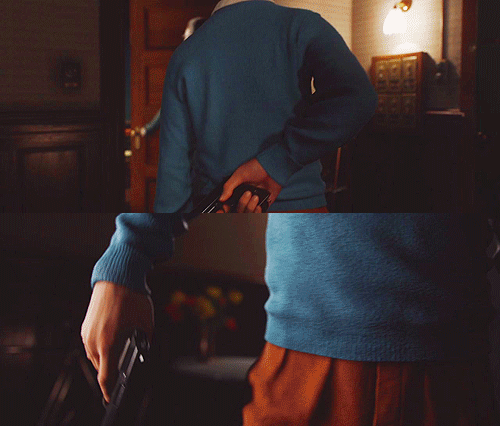
Adapting Tintin’s adventures on the big screen has always proved tricky, because Hergé’s style – called in French la ligne claire, which translates to "clear line" – is difficult to translate to cinema and especially in live-action. Finding actors to play those emblematic characters or transliterating visual gags is a perilous operation. Nevertheless, Steven Spielberg and Peter Jackson decided in the 2000s to rise up to the challenge. Both directors are VFX enthusiasts and they decided to use a hybrid technique: performance capture.
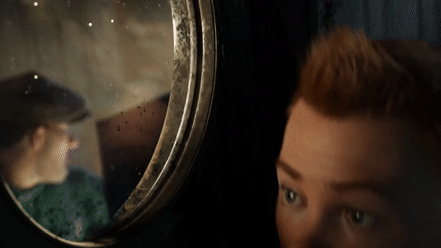
This 1990s technique came from the video game first. It involves picking up actors’ expressions and movements thanks to suits and sensors to translate it best to 3D animation. Video games such as Prince of Persia or The Last of Us use it to make their characters look the most realistic way possible. Peter Jackson knows performance capture very well, since he used it himself to create Gollum in Lord of the Rings. With this technique, directors reasoned they did not have to find actors whose primary appeal was their resemblance to the original comics’ characters anymore.
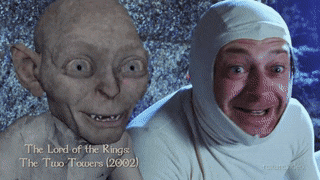
Other criteria were prioritized: the way they move or emote, or their voices. Directors could hire anyone they wanted and then make the magic happen through VFX. Hence why, for Secret of the Unicorn, performance capture imposed itself as the perfect compromise between pure computer animation and a live-action movie. It gives the movie a peculiar look: it is easy to recognize that it is not only computer animation, but it is difficult to pinpoint exactly what is different from the usual movies.

This might be why the experience was not very successful: Hergé’s aficionados did not get their bearings and the general public sometimes found the movie visually weird – flirting with the uncanny valley. Performance capture pushes the limits of what we consider realistic and it can make the viewers uncomfortable. But it also created a debate in the industry: can performance capture be considered as animation? The movie’s animators explained that performance capture was just a tool they used to keep the actors’ facial expressions but looking at it, it is hard to decipher what is animation and what is performance capture. As a result, if performance capture seemed to be the best choice on paper, the results were flawed. The movie did not bring forth a new animation era, and performance capture is still used parsimoniously in VFX techniques. But who knows? In the future, it may very well be a tool to innovate computer animation.

EL
#cinema#animation#computer animation#performance capture#tintin#captain haddock#tintin et milou#the adventures of tintin#the adventures of tintin: secret of the unicorn
11 notes
·
View notes
Text
They covered Pink Floyd, U2, Peter Gabriel, REM, Nick Cave, Evanescence, Madonna, Queen, Rammstein, Simon And Garfunkel, my personal favorite Belinda Carlisle's Heaven Is A Place On Earth...
Over time 90s music will get boiled down to just cheap nostalgia for boy bands. This is disgusting. How dare you erase the year where everyone was inexplicably super into Gregorian Chants
10K notes
·
View notes
Text
Alright, here's how I would reboot Doctor Who.

"For crying out loud, it's just a TV show!" - William Shatner, Saturday Night Live, 1986.
Part One: Baggage.
Let me get this out of the way first; I started watching Doctor Who when I was 6 years old. It was the 1993 Planet of the Daleks broadcast specifically. Obviously I wouldn't be writing a thing like this if I didn't immediately fall in love with the show. I spent the next decade of my life experiencing the show in bits and pieces. A recording from UK Gold here, a boxed set rented from the library there. The show formed a core of my being, of that there is no doubt, even though in the grand scheme of things it was just a TV show.
The 1990s and 2000s were a long crawl for the show's cultural irrelevancy. Being into the Doctor Who was genuinely considered weird. "Cult." Conventions were humble and somewhat offbeat affairs. That being said, we were content in our irrelevancy. The wilderness years brought forth some of the best Doctor Who stories we as fans got to experience. The Doctor Who magazine comic strips. The Big Finish audios. The New Adventures and BBC books.
Yet we always hoped against hope that the show would come back one day. Air on TV. New stories week after week, become truly mainstream again, and like a monkey's paw that wish came true.
I'm not going to waste time airing my grievances here. I never particular cared for the 2005 - 2010 years. There was just something about that era that never really gelled for me. That being said, I can't deny that there were moments that I enjoyed, or even loved. Dalek. Blink. Doomsday. Time Crash. Moments where I could be a fan without reservations. Still, it never really clicked.
The Moffat era was a marked improvement for me, though to be honest it still felt compromised by some of the tonal hangovers from the RTD era. It wouldn't be until Peter Capaldi's final season that I felt like Doctor Who was finally starting to resemble what I originally fell in love with, and, ironically, I would enjoy the Chibnall era without reservations at all. I know that isn't a popular opinion, but I genuinely enjoyed that era.
Hence I was sad to see it go in 2022. I was less than pleased to here RTD was being brought back to revitalise the show, but I was willing to give him a fair shake. We'd both changed over the last 20 years. No reason to come at it with any previous baggage.
Well, anyway, turns out the RTD revival era would be turbo-not-to-my-particular-tastes-3000.
Part Two: Throwing out the baggage.

So, what was the point of all that preamble? Well, as Shatner's maxim denotes, only a fool gets so invested in a TV show that it takes over their entire life. My days of fuming over farting aliens and duplicate David Tennants is long over. People love that era, and for good reason. That it didn't work for me is sour grapes at worse.
There's a part of me that wants to go on a week long rant about how bad The Reality War was, how cynical I feel regenerating The Doctor into Billie Piper is, and how deep RTD's head must be in the sand to produce one of the worst hours of TV I have ever seen, but I'm a 37 year old man and I should not be investing this much emotional energy into a cheap TV show about a time travelling space wizard.
All this is to say... why rant when you can channel the energy into something creative? And let me be clear here, much of the below pitch is an idea I've been mulling over for quite a long period. It's not a direct reaction to The Reality War. Nor is it an attempt to resurrect an idealised version of the classic or Chibnall eras. Everything I choose to pitch below is carefully considered. A clean break. A proposal focussed on winning back fans AND appealing to a brand new audience.
With that in mind, we commence.
Part Three: Where are we now?
The decisions made regarding this pitch are done so assuming the following status quo would be present as of its air date:
- The show would have been off the air for several years.
- The Billie Piper casting would have seen some form of resolution, rather than left hanging.
- The BBC would be willing to fund the show with a modest budget. No DisneyPlus involvement.
With the stage set I would need to open with my first distinct proposal; write the show with a more mature perspective in mind. I know the common consensus is that Doctor Who should appeal to children first and foremost, but I don't think giving the show a more grown-up angle would necessarily jeopardize that. I think stories that appeal more to teenagers and young adults would serve the show better than always dumbing things down for six year olds to get in on the ground floor.
I say this as someone who got into the show at age six, but we have to give up on this ideal that the show is going to be a generational constant that kids will get to experience year after year, decade after decade. The entertainment ecosystem just isn't like that any more. Doctor Who has to compete with Roblox and Fortnite, Youtube and TicToc. The opportunity to be that generational constant may already be long gone.
My proposal is that just making a good TV show that finds an audience would be enough.
To whit, I propose a Doctor Who reboot that skews towards an older audience. A Doctor that drinks alcohol. Stories that can delve into darker areas like drug dealing and historical war crimes. Where relationships between companions can be explored on the sexual level. Don't get me wrong, I'm not talking about Torchwood here, but just allow the show to get a little more adult than it previously was. To no longer hide stuff behind innuendo.
Meanwhile, I also propose a format that that prioritises longer, multi-part stories. This serves two purposes. It gives writers room to actually explore their stories in greater depth, something the show has been in dire need of late, but also works as a budget conscious creative decision. A nine episode season made up of three stories would be significantly cheaper than eight episodes each needing a fresh location, cast and costumes.
So with the stage and tone set, let's introduce our characters.
Part Four: The Doctor. Mysterious. Intense. Frightening.

Indira Varma is The Doctor. Yes, I know she was in Torchwood and Rogue. No, this will never be acknowledged in-show. Indira is an amazing actress. Dedicated and versatile. Sometimes I forget it is her when I'm watching season one of Rome, such as it is she can blend into the role. I don't think I need to convince anyone of this casting choice. If you know her work then you know she would absolutely nail it.
Personality wise, I want a darker, more intense and less friendly Doctor. Think late-era Sylvester McCoy or Peter Capaldi. This is a Doctor who rarely, if ever, smiles. She's aloof, somewhat above it all. Cold, calculating, but likeable. She's Mr Spock, with a little touch of Gandalf and David Bowie in They Hunger. She'll get mistaken for a vampire on numerous occasions, the way she frequently hangs back in the shadows and calculates her next move.
She's also a physically active Doctor. Like Pertwee, she's not afraid to get her hands dirty and will frequently pull out the Venusian Aikido when her back is against the wall, though as with Mr Spock, she will frequently disable her opponents with as little showmanship as possible, and does not relish the use of violence.
The sonic screwdriver's use and utility will be massively decreased. It can unlock doors, and that's about it. It can't hack into computers, and it can't "read" data about the environment or whatever. The psychic paper is nowhere to be seen. This is a Doctor that has to think their way out of a problem, not bypass it with gadgets or space magic.
Part Five: The Companions. Strong, dysfunctional, distinct.

This reboot will introduce three major companions. Yes, you heard me right. Once again, I want to discard common consensus that we have to be introduced through single, common everyman. Note, the actors I have chose are mainly just for the purposes of giving you a feel for the character. I have no idea if they'd be affordable or even available, but they should give you an image of how the character would be.
Bella Ramsey is Ash. A wanderer, a thief, a vagabond. They've been running their whole life. No home. No parents. Just survival on the streets of 21st Century Britain. They're slow to trust, which makes sense, since Britain isn't exactly a trusting place right now. This is why they are drawn to the Doctor. They're alike in some ways. Travellers without a home. Purpose to be found in turning the next corner.
Dakota Beavers is Tommy. A rez kid who just wants a quiet life. He's a good mechanic, which is more than can be said for his weed dealing cousin who keeps bringing the heat down on them both. Tommy otherwise would be of no concern to The Doctor, if it wasn't for that strange sonic wrench handed down from his grandfather, that seems to contain very Gallifreyan looking technology.
Abigail Lawrie is Princess Ssesler. Heir to the throne of New Mars, Ssesler is an Ice Lady who has no interest in ruling the Martian people, and has run away from home to seek adventure, hunting down the artefacts of Old Mars' glory days. Immature, petulant, yet genuinely fascinated and open minded on cultures from the past, Ssesler's collision course with The Doctor may not go smoothly, but their curious natures are a strong complement.
I know three companions might be seen as stacking the cast, and I get that, but I also think that a broader season, that splits stories over three episodes apiece, will allow the leeway to develop them all and give them room to breathe.
Part Six: The Opening Act.
Season One opens in medias res, where Ash is planning to rob a priceless antique from a high-stakes auction. Also on the scene is The Doctor, who is showing a particular interest in an odd, blue diamond. The two are antagonistic at first, but quickly team up against the villainous Count Jackson, who also wants the diamond. The Doctor reveals that this is a Temporal Lodestone, ancient time manipulation tech that should have been long buried. Count Jackson is actually Jugasar, of the Jagaroth, an ancient race who have had their corporal forms shattered across time. Jugasasr wishes to unite three Temporal Lodestone, which would give him the power to reform on ancient earth and prevent the extinction of his race, at the cost of humanity ever existing. Episode 1 ends with Jugasar successfully getting the first Lodestone and blinking away from Britain and our heroes. The Doctor and Ash run to the Tardis and give chase.
Episode 2 begins with Tommy pulling into the local reservation bar, only to find a new state Police Chief introducing himself to the reservation Sheriff. Chief Jackson lectures Tommy on his authority, admitting that he has no intent to respect the reservation's sovereignty if it gets in his way. Tommy then immediately heads out to his cousin's weed farm to warn him that trouble might be on its way. We discover Tommy has a mysterious, sonic screwdriver-like device, and that his grandfather knew about things on a "Cosmic," level. Jackson ambushes Tommy on his way back to town, only for the Tardis to materialise around Tommy's car. The Doctor, now with Ash in tow, reveals that the next Loadstone is somewhere on the reservation, and together they discover that somehow it is buried in Tommy's grandfather's grave. The story ends with both hero and villain having one Lodestone each.
Episode 3 begins in the ancient ruins of Mars. Princess Ssesler is doing a bit of tomb raiding, while an Ice Warrior security squad, lead by Lord Jassskon, approaches the planet to bring the princess home. The Doctor, Tommy and Ash arrive, cross paths with Ssesler and battle the Ice Warrior security squad. We go through some Indiana Jones style tombs and traps, before having a big showdown at an ancient Martian temple where the final lodestone remains. Jugasar succeeds in finding the Loadstone, overpowers the Tardis team for the second time and activates the three, only for his form to disintegrate into the time vortex.. The final Lodestone was a fake, only figured out by Ssesler, who knew that the ancient Martians would never display such a valuable artefact so prominently, and clocked it as a fake.
With the threat neutralised The Doctor departs, with all three of her new companions choosing to accompany her onto adventures in the Tardis, and they depart for worlds unknown.
Part Seven: Pushing the Boat Out.
From here on out I'd want the series to just focus on strong, straight science fiction concepts. A squad of soldiers on an ice planet locked in a stalemate with clone duplicates who have no way of knowing which are the clones and which are the originals. A story set during the English Civil War where a local preacher imbued with the power of an alien artefact is inadvertently using it to rile up the tempers of the Roundheads. A lone Dalek stalks a deep space salvage ship in an Alien-type horror story.
Have a story that explores the Galactic Federation. Have the Tardis team come across a conspiracy to sabotage two warring civilisations that the Federation is attempting to mediate with (Sontarons/Rutans? Dravens/Bannermen? Dominators/Krotons? Two completely new alien races?) and it is a race against time before the two sides detonate a sun in an attempt to cripple the other's fleet.
If UNIT is to reappear, really just try to take them back to square one. They're a small international force of specialists that is being directed from the European Mainland. Dealing with red tape and dismissive authorities is just as much of a problem as alien infiltrators. If Kate is still around, have her butt heads with an antagonistic (though ultimately well intentioned) bean counter officer from Geneva that keeps hamstringing their operations with budget cuts.

Big idea for the finale. The Doctor crosses paths with another renegade time lord, Praxis, that serves as a Magneto to their Professor X. An extremist who isn't afraid to get their hands dirty to do what they feel is right. Have a story on a planet where in 100 years time the robotic subclass will gain sentience and fight for liberation, but Praxis reveals that their sentience manifested much earlier, and wants to liberate the bots now, even if it will result in a more violent uprising. Will The Doctor condemn a persecuted underclass to 100 years of oppression, or could they justify the deaths of thousands of humans in the crossfire if it means their liberation? Really explore the murky reality of such a choice and have Praxis call The Doctor out over their frequent both-sidesisms. A more anti-heroic adversary than a villain like The Master, and an ending where The Doctor has to choose between the lesser of two evils, without giving the audience a clear answer on what that is.
Some other ideas for companions jumping in later on. A revisit of the Leela concept with a big Red-Sonja type barbarian woman from an aquatic world who has gills. Introductory story involves overthrowing the corporation that is exploiting the planet. Have her butt heads with The Doctor on cultural issues. Maybe introduce a 1930's hard boiled detective to hang around in the Tardis for a while and be friends-with-benefits with the barbarian woman. Lend a time-shifted and alien perspective to stories like we used to get with some of the companions in classic who.
Part Eight: The Bit Where I Just Get Self Indulgent

I envision this all as a three season run, and the power will probably go to my head before Season 3. Before said season launches, we do three specials starring Paul McGann as the Eighth Doctor. I have no pragmatic reason to do this, and in fact it'd probably be a bad idea to do it in the middle of a era that is trying to be a fresh start, but I really want to see Paul McGann on screen again and if I was showrunner I'd do everything in my power to squeeze that in.
In my defence the three specials would be entirely optional for new audiences, but tie in to the overall third season for those watching. The Three Stories would be adaptions of The Chimes of Midnight, Children of the Revolution and Alien Bodies, with McGann back and India Fisher playing Charley. It will be made clear that The Doctor suspects that has already experienced these stories before, which is why they are both older than they should be, and realising during the climax of Alien Bodies that Charley shouldn't be there. This would be revealed to be due to the machinations of Faction Paradox, the Expanded Universe time travelling cult that draws power from paradoxes. This would lead in to featuring them as the arc villains of season 3.
Obviously we'd take care to introduce them properly and don't leave people feeling like they need to go back and read wilderness years novels to get the jist of them. In the final story the Tardis team come across an auction in some grand futuristic space station, mirroring the antiques auction in the first episode. The Doctor discovers that the auction is being held by Faction Paradox, who are selling artefacts from The Doctor's future. The team then has to find a way to put a stop to the auctions, as these items all need to find their proper place in the Doctor's timeline, but the strain of coming into contact with so many artefacts out of sync with her timeline puts enough stress on her to force a regeneration, leaving the new incumbent Doctor, to finally finish the fight.
Alternatively, my other "glup shitto" idea would be to do a final season dubbed "Doctor Who Must Die!" Where the Doctor gets a bounty put on their head and has to spend an entire season outsmarting intergalactic hitmen. Bring back Vinder, now back under the machinations of the Grand Serpent. Bring in Shayde from the DWM comic strips, now reprogrammed to seek vengeance on behalf of the Time Lords. Resurrect Rogue, older and vengeful after his time in the hell dimension. Make it known to the audience the story will end with the Doctor's regeneration and leave them guessing and debating who, exactly, will be the one to pull the trigger.
Part Nine: Kill your darlings.
“A lot of times when you’re working on IP storytelling your impulse is to open the toybox and start playing with all the toys. You should try to resist that. What you should do is leave more toys in the toybox than were there before you got there” - Tony Gilroy, 2025.
So, upon reading the last part back I realised that all that stuff would be an inherently bad idea. Much as I would like to see McGann back in the role, or live action versions of characters from the comics to show up, this is absolutely not the time for all that. This is meant to be a relaunch. A fresh start. In a world where you're inheriting a Doctor Who era that is flying high, you can get away with talking spin-offs and deep lore cuts, but for an era that is coming after a presumed hiatus, you just have to let all that go. Those who fail to learn the lessons of RTD2 are doomed to repeat it.'

Kill your darlings. Forget Faction Paradox and The Grand Serpent. Keep the series on the straight and narrow. Just keep up with good, strong, self-contained science fiction stories. Use UNIT sparingly. Use your time to flesh out more of the newly introduced aspects and characters, like Praxis. Heck, I was maybe even a bit too indulgent for the opening episodes, with the inclusion of the Jagaroth and the Ice Warriors. Maybe Lord Jackson ought to be from a brand new alien race. Maybe Princess Ssesler ought to be too.
Part Ten: In Conclusion.
This was mostly just spitballing ideas amongst all the recent talk of the show going on hiatus. It's not perfect. Either way, I hope it's clear that my attempt with this was to show the numerous ways the show could go without going back to the well of the same old shit. We don't need to have the companion be a bubbly young woman from modern day earth every single time. We don't need the series to be bogged down with myth arcs. We don't need to squeeze a monster of the week story into a 45 minute episode every week. Expand your mind. Think outside of the box.
I also hope it goes to show how it isn't so easy to avoid giving in to your baser impulses. There's a "glup shitto," cavalcade in all of us, waiting to break out at a moment's notice. Always keep that in check.
Maybe this little ramble has given some food for thought, and I encourage each and every one of you to have a hard think about how YOU would do a reboot if you ever had the chance. You never know, someone out there completely new may one day be in the big chair. Doctor Who can't stay in the hands of the same creative team forever.
Or at least, I hope it won't.

9 notes
·
View notes